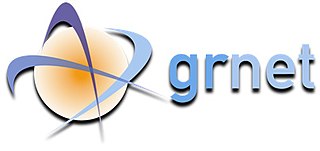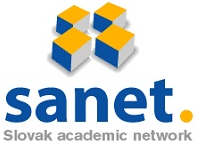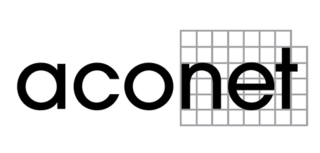Related Research Articles

Janet is a high-speed network for the UK research and education community provided by Jisc, a not-for-profit company set up to provide computing support for education. It serves 18 million users and is the busiest National Research and Education Network in Europe by volume of data carried. JANET was previously a private, UK government-funded organisation, which provided the Janet computer network and related collaborative services to UK research and education.
The National Science Foundation Network (NSFNET) was a program of coordinated, evolving projects sponsored by the National Science Foundation (NSF) from 1985 to 1995 to promote advanced research and education networking in the United States. The program created several nationwide backbone computer networks in support of these initiatives. Initially created to link researchers to the NSF-funded supercomputing centers, through further public funding and private industry partnerships it developed into a major part of the Internet backbone.

Internet2 is a not-for-profit United States computer networking consortium led by members from the research and education communities, industry, and government. The Internet2 consortium administrative headquarters are located in Ann Arbor, Michigan, with offices in Washington, D.C. and Emeryville, California.
CARNET is the national research and education network of Croatia. It is funded from the government budget and it operates from offices in Zagreb and five other cities.

The Greek Research and Technology Network or GRNET is the national research and education network of Greece. GRNET S.A. provides Internet connectivity, high-quality e-Infrastructures and advanced services to the Greek Educational, Academic and Research community, aiming at minimizing the digital divide and at ensuring equal participation of its members in the global Society of Knowledge. Additionally, GRNET develops digital applications that ensure resource optimization for the Greek State, modernize public functional structures and procedures, and introduce new models of cooperation between public bodies, research and education communities, citizens and businesses. GRnet's executives have been contributors of or occupied board positions in organisations including GÉANT, TERENA, DANTE, Euro-IX, RIPE NCC. GRNET provides advanced services to the following sectors: Education, Research, Health, Culture. GRNET supports all Universities, Technological Education Institutes, Research Centers and over 9,500 schools.
Optical Carrier transmission rates are a standardized set of specifications of transmission bandwidth for digital signals that can be carried on Synchronous Optical Networking (SONET) fiber optic networks. Transmission rates are defined by rate of the bitstream of the digital signal and are designated by hyphenation of the acronym OC and an integer value of the multiple of the basic unit of rate, e.g., OC-48. The base unit is 51.84 Mbit/s. Thus, the speed of optical-carrier-classified lines labeled as OC-n is n × 51.84 Mbit/s.
The China Education and Research Network is the first nationwide education and research computer network in China. The CERNET project is funded by the Chinese government and directly managed by the Chinese Ministry of Education. It is constructed and operated by Tsinghua University and the other leading Chinese universities.

Fiber to the x or fiber in the loop is a generic term for any broadband network architecture using optical fiber to provide all or part of the local loop used for last mile telecommunications. As fiber optic cables are able to carry much more data than copper cables, especially over long distances, copper telephone networks built in the 20th century are being replaced by fiber.

Internet in Russia or Russian Internet and sometimes Runet is a part of the Internet which is related to Russia. As of 2015 Internet access in Russia is available to businesses and to home users in various forms, including dial-up, cable, DSL, FTTH, mobile, wireless and satellite.

A core router is a router designed to operate in the Internet backbone, or core. To fulfill this role, a router must be able to support multiple telecommunications interfaces of the highest speed in use in the core Internet and must be able to forward IP packets at full speed on all of them. It must also support the routing protocols being used in the core. A core router is distinct from an edge router: edge routers sit at the edge of a backbone network and connect to core routers.

EMMAN was a company limited by guarantee and jointly owned by its members, eight Higher Education Institutions in the East Midlands region of the United Kingdom.
Delivery of Advanced Network Technology to Europe (DANTE) is a not-for-profit company that plans, builds and operates the consecutive generations of the backbone network that interconnects the national research and education networks (NRENs) in Europe. The organisation is based in Cambridge, United Kingdom and was formed in 1993 as a limited liability company owned by Réseaux Associés pour la Recherche Européenne (RARE). Ownership was transferred to a number of NRENs and government agencies in 1994.
This article lists the deployment of fiber to the premises, fiber to the home and fiber to the building by country.

Merit Network, Inc., is a nonprofit member-governed organization providing high-performance computer networking and related services to educational, government, health care, and nonprofit organizations, primarily in Michigan. Created in 1966, Merit operates the longest running regional computer network in the United States.
The Ohio Academic Resources Network (OARnet) is a state-funded IT organization that provides member organizations with intrastate networking, virtualization and cloud computing solutions, advanced videoconferencing, connections to regional and international research networks and the commodity Internet, colocation services and emergency web-hosting.
The Israel InterUniversity Computation Center (IUCC), implements, operates and maintains the national research and education network (NREN) of Israel.
Polish Grid Infrastructure PL-Grid, a nationwide computing infrastructure, built in 2009-2011, under the scientific project PL-Grid - Polish Infrastructure for Supporting Computational Science in the European Research Space. Its purpose was to enable scientific research based on advanced computer simulations and large-scale computations using the computer clusters, and to provide convenient access to the computer resources for research teams, also outside the communities, in which the High Performance Computing centers operate.

SANET is the national research and education networking organisation of Slovakia. The SANET association is a non-profit organisation whose members contribute to the operations of the network. It is a member of TERENA.

ACOnet is the name of the national research and education network in Austria. The ACONET association promotes the development and use of that network. ACOnet is not managed and operated by ACONET, but by a unit in the Computing Centre of the University of Vienna that also operates the Vienna Internet Exchange. The University of Vienna represents ACOnet internationally, for example as a member of TERENA and as a participant in the project that funds the European backbone network GÉANT.
Missouri Research and Education Network (MOREnet) is a member-driven consortium, operating as a separate business unit within the University of Missouri in Columbia, Missouri. They are primarily made up of Missouri's K-12 schools, colleges and universities, public libraries and government organizations. In addition to maintaining a computer network for Internet access to school districts and libraries in the U.S. state of Missouri. they also provide technology consulting, a technology help desk as well as professional development and training, consortium discounts and a la carte services by a team of approximately 85 subject matter experts.
References
- ↑ "PIONIER Consortium - PIONIER - Polish Optical Internet - Consortium of Academic Computer Network and High Performance Computer Centers". PIONIER Consortium. Retrieved 2010-09-14.
- ↑ http://www.pionier.net.pl/online/pl/artykuly/1097/PIONIER_zamknal_petle_polnocno-wschodnia.html, pol.
- ↑ http://www.pionier.net.pl/online/pl/artykuly/1092/PIONIER_laczy_ze_Wschodem.html, pol.